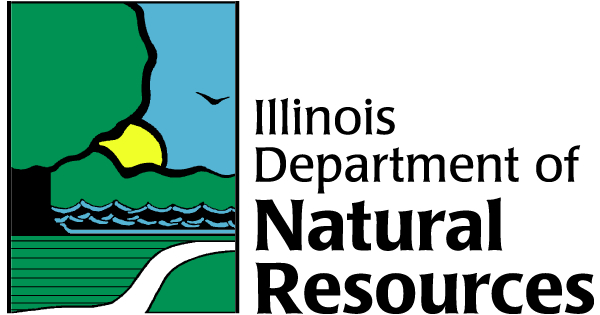Forests
Forests are an important natural resource. They provide oxygen for humans and animals to breathe, help control flooding, provide habitat to countless native species, and provide timber. Like prairies, forests act as a carbon sink. They absorb CO2, a significant greenhouse gas, helping to reduce climate change impacts.
Climate change puts our forests at risk. The Illinois Natural History Survey reported in 2017 that higher temperatures cause droughts and wildfires, insect outbreaks and the spread of invasive species (6). When trees burn, they release all the carbon that they’ve stored back into the atmosphere (Pryor et al 180-81). Research by the Illinois Natural History Survey suggests “that a continuing decline in the populations of many native plants and wildlife species is likely attributable to climate change” (14).
Therefore, protecting and expanding forests in natural and urban areas is important to help reduce impacts related to climate change.
What has IDNR Been Doing?
The Illinois Department of Natural Resources lands sequester (i.e., they absorb and store carbon in organic materials) over 144,000 tons of carbon, equal to 334,888,165 miles driven by an average gasoline-powered passenger vehicle each year. Forested IDNR land accounts for about 66% of that sequestration. Sequestering carbon in our natural lands is a key solution to stopping global warming and climate change. IDNR also promotes conservation programs for private landowners. For example, according to the IDNR Climate Action Plan, forests enrolled in the Forest Certification Program sequester approximately 339,000 tons of carbon per year (21).
To protect our forests, IDNR implemented the Forest & Woodland Campaign as part of IWAP. The goals of the campaign are for IDNR and other partners to implement the conservation actions identified in IWAP such as:
- Expand and enhance forests in Illinois
- Provide protection for species of concern
- Implement sustainable forest management strategies
- Develop high-quality communities within these ecosystems
Another campaign included in IWAP is the Green Cities Campaign. The goals of this campaign are:
- Integrate wildlife and habitat conservation into local and regional planning
- Increase ecosystem function in urban areas
Learn More
IDNR’s efforts to protect Illinois forests
From wildfire management to forest stewardship to how Illinois manages our timber resources, this page offers a wealth of information on IDNR’s work to conserve and protect our states’ forests.
Forest Health
This resource helps people and communities learn how to develop healthy urban forests with information on understanding each tree species and the effects disease, insects and pollution have on each and how to address these dangers.
Illinois Forest Action Plan
Visit this page to learn about Illinois’s Forest Action Plan and Forest Resources, Forest Stewardship, Forest Health, Urban Forestry, Mason State Tree Nursery and other useful Illinois Forestry links.
Illinois Tree City USA and Illinois Urban and Community Forest Programs
This link provides information about the urban forest canopy. The Illinois Department of Natural Resources Urban and Community Forestry Program helps assist municipalities and local governments in developing, managing and sustaining local community forestry programs. Did you know that 88% of Illinois’ population benefit from these high quality and diverse urban forests and Illinois’s TREE CITY USA communities are some of the most viable urban forests across the state.
Illinois Wildlife Action Plan
Review this page to learn more about IDNR’s Illinois Wildlife Action Plan, developed to protect wildlife and wildlife habitats in forests, prairies, wetlands and more.
IWAP Forest & Woodland Campaign
This page details the forest and woodland part of the Illinois Wildlife Action Plan. The primary goals of the Forest and Woodland Campaign include increasing forest acreage throughout the state and developing high-quality communities within these ecosystems.
IWAP Green Cities Campaign
Constant urban expansion threatens the plants and animals in Illinois. This resource provides information on how IDNR is helping cities integrate wildlife and habitat conservation into local and regional planning to increase ecosystem function in urban areas through habitat conservation, restoration, and connectivity.
30 x 30 Conservation Act
The Illinois General Assembly passed the Illinois Thirty-by-Thirty Conservation Task Force Act in 2021 that puts forth a bold initiative to save and restore 30% of Illinois natural areas by 2030. Click this link to learn more.


